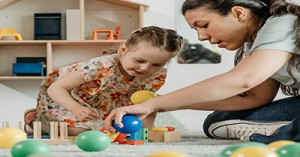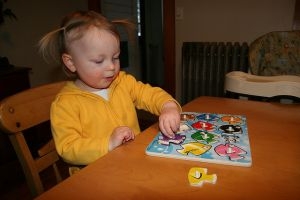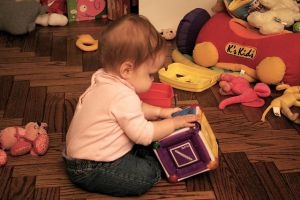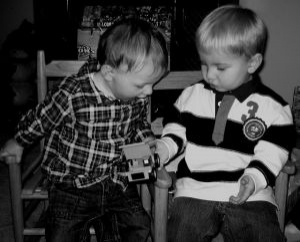Attachment theory is a key concept in developmental psychology that examines the importance of early relationships between children and their Educators.The following article provides information on What Is Attachment Theory, Key Aspects of Attachment Theory, Significance of Strong, Secure Attachments, Practical Strategies For Attachment Theory, How Lack Of Attachment Can Impact On Development and more.
What Is Attachment Theory?
Attachment theory is a psychological framework that focuses on the relationships and bonds between humans, especially the connection between children and their caregivers. The theory was primarily developed by John Bowlby and later expanded by Mary Ainsworth.
Attachment theory underscores the importance of early relationships in shaping an individual's emotional and social development.
Key Aspects of Attachment Theory
Formation of Attachments:
- Early Bonds: The theory, mainly developed by John Bowlby and Mary Ainsworth, emphasizes that early bonds with caregivers are critical for a child's emotional and social development.
- Secure Base: A secure attachment provides a reliable base from which children can explore their environment and return to for comfort and safety.
Attachment Styles:
- Secure Attachment: Results from consistent, responsive caregiving. Children with secure attachment feel safe, understood, and confident to explore their surroundings.
- Insecure Attachment: Can arise from inconsistent or unresponsive caregiving, leading to anxiety, avoidance, or disorganized behavior. There are several types of insecure attachments, including anxious, avoidant, and disorganized attachment.
Attachment Behaviors:
- Proximity-Seeking: Behaviors like crying, clinging, or following the caregiver to maintain closeness.
- Separation Anxiety: Distress shown by the child when the caregiver leaves.
- Safe Haven: Seeking the caregiver for comfort in times of distress.
Links Between Attachment and Brain Development
Emotional Regulation
Secure Attachment: Helps in the development of the brain's emotional regulation system. Consistent and sensitive caregiving allows children to learn how to manage their emotions effectively. This emotional regulation is linked to the development of the prefrontal cortex, responsible for decision-making, problem-solving, and emotional control.
Stress Response System
Secure Attachment: Influences the healthy development of the hypothalamic-pituitary-adrenal (HPA) axis, which regulates stress hormones like cortisol. Securely attached children learn to manage stress effectively, leading to better stress response and resilience.
Insecure Attachment: May result in a hyperactive HPA axis, leading to chronic stress and anxiety, as children struggle to manage their stress.
Social Development
Secure Attachment: Promotes the development of the social parts of the brain, helping children develop empathy, understand others' emotions, and build healthy relationships. This social development is linked to the right hemisphere of the brain, involved in processing social and emotional information.
Cognitive Development
Secure Attachment: Provides a safe base from which children can explore their environment, leading to better learning and memory. This cognitive development is linked to the hippocampus, a part of the brain involved in learning and memory.
Summary
Attachment Aspect
1. Emotional Regulation
2. Stress Response System
3. Social Development
4. Cognitive Development
Brain Development Aspect
1. Prefrontal Cortex
2. Hypothalamic Pituitary Adrenal Axis
3. Right Hemisphere
4. Hippocampus
Significance of Strong, Secure Attachments
Strong, secure attachments are crucial for children's overall development and well-being. Here are some key reasons why these attachments are significant:
Emotional and Social Development
-
Trust and Security: Secure attachments provide children with a sense of trust and security, enabling them to explore their environment and form healthy relationships.
-
Emotional Regulation: Children with strong attachments learn to manage their emotions effectively, leading to better emotional regulation and resilience.
-
Social Skills: Securely attached children are more likely to develop positive social skills, such as empathy, cooperation, and effective communication.
Cognitive Development
-
Learning and Exploration: When children feel secure, they are more willing to explore and engage in learning activities, which promotes cognitive development.
-
Problem-Solving Skills: Secure attachments encourage children to develop problem-solving skills by providing a safe base from which they can explore and take risks.
Behavioral Development
-
Positive Behavior: Children with strong attachments are more likely to exhibit positive behavior and have fewer behavioral problems.
-
Self-Confidence: Secure attachments boost children's self-confidence and self-esteem, enabling them to face challenges with a positive attitude.
Long-Term Impact
-
Resilience: Strong attachments in early childhood contribute to resilience in adulthood, helping individuals cope with stress and adversity.
-
Healthy Relationships: The quality of early attachments often influences the nature of future relationships, including friendships, romantic relationships, and parenting.
Practical Strategies For Attachment Theory
Implementing practical strategies for attachment theory in early childhood can significantly enhance children's emotional and social development. Here are some effective strategies:
Consistent and Responsive Caregiving
-
Predictable Routines: Establishing consistent daily routines helps children feel secure and understand what to expect.
-
Example: Maintaining a regular schedule for meals, naps, and activities.
-
-
Responsive Interactions: Respond promptly and appropriately to children's needs and cues.
-
Example: Comforting a child when they are upset and engaging with them during play.
-
Creating a Nurturing Environment
-
Positive Touch and Comfort: Physical touch, such as hugs and holding hands, fosters a sense of security.
-
Example: Offering a comforting hug to a child who is feeling anxious.
-
-
Safe and Stimulating Spaces: Create environments that are safe, welcoming, and filled with age-appropriate activities.
-
Example: Providing a cozy reading corner with soft cushions and a variety of books.
-
Building Trust and Secure Relationships
-
Attachment Activities: Engage in activities that promote bonding and attachment.
-
Example: Interactive games like peek-a-boo and singing songs together.
-
-
Individual Attention: Spend quality one-on-one time with each child to strengthen individual attachments.
-
Example: Reading a favorite story to a child while sitting in their lap.
-
Encouraging Emotional Expression
-
Emotion Coaching: Help children identify and express their emotions in healthy ways.
-
Example: Using phrases like, "I see you are feeling sad. It's okay to feel that way. Can you tell me more about it?"
-
-
Modeling Healthy Relationships: Demonstrate positive interactions and conflict resolution with others.
-
Example: Show respect and empathy in interactions with colleagues and other children.
-
Supporting Independence and Confidence
-
Encouraging Exploration: Provide opportunities for children to explore and make choices independently.
-
Example: Setting up a sensory play area where children can choose different materials to explore.
-
-
Positive Reinforcement: Use praise and encouragement to build children's confidence and self-esteem.
-
Example: Celebrating small achievements with words of affirmation like, "You did a great job putting away the toys!"
-
Parental Involvement
-
Collaborative Partnerships: Work closely with parents to support children's attachment needs both at home and in the childcare setting.
-
Example: Regular communication with parents about their child's progress and needs.
-
-
Parent-Child Activities: Encourage activities that strengthen the parent-child bond.
-
Example: Organizing family events where parents and children can engage in activities together, such as a picnic or a craft day.
-
Professional Development
-
Ongoing Training: Educators should participate in professional development opportunities to enhance their understanding of attachment theory and best practices.
-
Example: Attending workshops or seminars on attachment and early childhood development.
-
Implementing these strategies can help foster strong, secure attachments in early childhood, promoting healthy development and well-being.
How Lack Of Attachment Can Impact On Development
Lack of attachment, particularly a secure attachment, can significantly impact a child's development in various ways. Here are the primary areas of impact:
Emotional Development
-
Emotional Dysregulation: Children who lack secure attachments often struggle to manage and express their emotions. They may experience heightened anxiety, depression, and emotional instability.
-
Low Self-Esteem: Without a consistent and nurturing relationship, children may develop a negative self-image and lack confidence.
Social Development
-
Difficulty Forming Relationships: Children with insecure attachments may have trouble forming and maintaining healthy relationships with peers and adults. They might struggle with trust and intimacy.
-
Behavioral Issues: Insecure attachment can lead to aggressive, defiant, or withdrawn behaviors. Children may have difficulty understanding social cues and norms.
Cognitive Development
-
Delayed Learning: Lack of secure attachment can impact cognitive development, leading to delays in language acquisition, problem-solving skills, and academic performance.
-
Attention Deficits: Children may have difficulty concentrating and sustaining attention, impacting their ability to learn and succeed in school.
Physical Development
-
Health Problems: Chronic stress from lack of secure attachment can affect the immune system, leading to more frequent illnesses.
-
Growth Delays: In extreme cases, severe emotional neglect can result in growth delays and developmental disorders.
Overall Well-Being
-
Chronic Stress: Insecurely attached children often experience high levels of stress, which can have long-term effects on their mental and physical health.
-
Difficulty Coping: They may struggle to cope with challenges and changes, leading to increased vulnerability to mental health issues later in life.
Fostering secure attachments through consistent, responsive, and nurturing care is crucial for the healthy development of children.
Further Reading
Child Theorists and Their Theories in Practice
Linking Theories To The EYLF
Child Theorists Posters
Incorporating Theorists Into Early Childhood Documentation
Linking Theories To The Developmental Milestones







 Toddlers have a greater understanding of the world around them by this stage. Their cognitive development (also known as intellectual development and thinking skills) continues
Toddlers have a greater understanding of the world around them by this stage. Their cognitive development (also known as intellectual development and thinking skills) continues Infants begin to develop trust when parents begin to fulfil their needs. Such as changing an infant's nappy when needed, feeding on request and holding
Infants begin to develop trust when parents begin to fulfil their needs. Such as changing an infant's nappy when needed, feeding on request and holding Beginning at birth the construction of thought processes, such as memory, problem solving, exploration of objects etc, is an important part of an infant’s cognitive
Beginning at birth the construction of thought processes, such as memory, problem solving, exploration of objects etc, is an important part of an infant’s cognitive Toddlers want to do more on their own and do not like it when you begin to establish limits on their behaviour. Tantrums can become
Toddlers want to do more on their own and do not like it when you begin to establish limits on their behaviour. Tantrums can become Your preschooler is now able to focus their attention more accurately and is less influenced by distractions. The intensity of questions increase as your child
Your preschooler is now able to focus their attention more accurately and is less influenced by distractions. The intensity of questions increase as your child John Dewey is often seen as the proponent of learning by doing – rather than learning by passively receiving. He believed that each child was active,
John Dewey is often seen as the proponent of learning by doing – rather than learning by passively receiving. He believed that each child was active, Toddler advance and gains new skills in Gross Motor Development milestones achieved throughout earlier years. Co-ordination and challenges that could not be performed before such
Toddler advance and gains new skills in Gross Motor Development milestones achieved throughout earlier years. Co-ordination and challenges that could not be performed before such Erik Erikson developed a psychosocial theory to understand how we each develop our identities through eight stages of psychosocial development from infancy to adulthood. The
Erik Erikson developed a psychosocial theory to understand how we each develop our identities through eight stages of psychosocial development from infancy to adulthood. The At this point preschoolers begin to interact effectively with others. Play becomes more innovative and organized and “boyfriend” or “girlfriend” begins to emerge. Preschoolers have
At this point preschoolers begin to interact effectively with others. Play becomes more innovative and organized and “boyfriend” or “girlfriend” begins to emerge. Preschoolers have From now, babies begin to identify and respond to their own feelings, understanding other's feelings & needs and interact positively with others. A baby's social and
From now, babies begin to identify and respond to their own feelings, understanding other's feelings & needs and interact positively with others. A baby's social and


